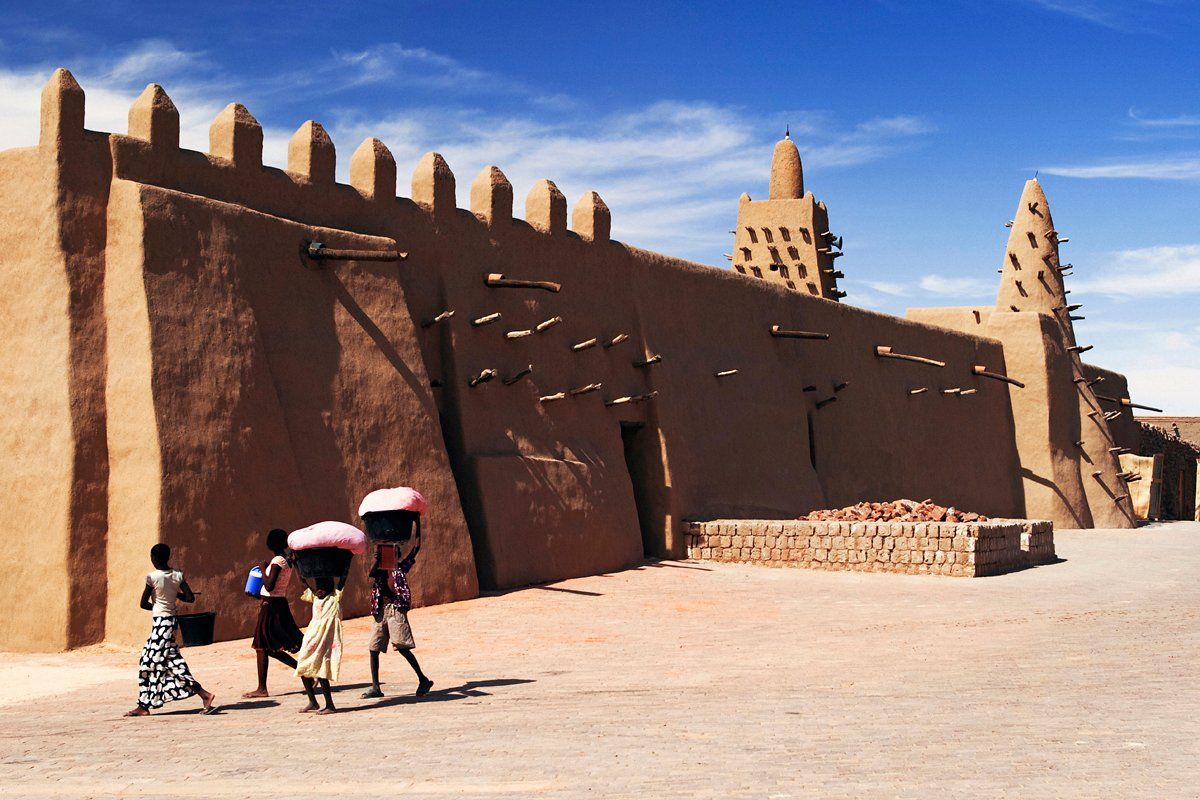
From the moment the followers of Muhammad came roaring out of Arabia, in A.D. 633, they've cherished beautiful things. An exhibition that just closed at the Metropolitan Museum in New York showed how the first Muslims were inspired by glorious works from the Greek-speaking world, and their descendants never stopped being art-friendly.
That's why it has been such a shock to see the artistic heritage of Timbuktu, one of the great seats of Africa's Islamic culture, fall prey to Muslim puritans. As recently as July 10, members of a group called Ansar Dine, which has been linked to al Qaeda, stormed the 14th-century Djingareyber mosque and destroyed two ancient shrines they found there, according to Reuters and Agence France-Presse. In late March, in the chaos of Mali's civil war, a small number of these fighters gained control of the city and have since been attacking its heritage. At the start of July, we got word of several shrines they'd destroyed. They'd also broken open a sealed door on the 15th-century Sidi Yahya mosque, which local tradition says ought to stay closed until Judgment Day. "Building on graves is contrary to Islam. We are destroying the mausoleums because it is ordained by our religion," Ansar Dine has insisted, claiming that local followers of the Sufi strain of Islam are guilty of idolatry each time they visit the tombs of their movement's sages.
But Shamil Jeppie, director of the Tombouctou Manuscripts Project at the University of Cape Town, rejects the idea that this is about the kind of consistent ideology found in other groups we call Islamist. "These guys, you can't give them such cred," says Jeppie. "It's just thuggery." He says the locals had been resisting the fighters' authority, and he feels that the attacks on the shrines are a form of punishment. (Jeppie also reports that, so far, Timbuktu's great collections of Islamic manuscripts, which he studies, seem not to have been threatened.) The puritanical religious views that Ansar Dine claims to espouse, Jeppie says, derive from the relatively recent Wahhabi movement, "born in Arabia in the 18th century," and have been taught to today's fighters by patrons from Saudi Arabia.
Ansar Dine claims that its attacks on the shrines reflect the pure form of Islam practiced by Muhammad's first followers, but Jeppie and other experts, both Western and Muslim, say that misinterprets the historical evidence. There was always debate about showy entombment in shrines and mosques, but the practice was established from early on and has never been definitively rejected in Islamic law. "All you have to do is look at the Taj Mahal," says Sheila Canby, head of the Metropolitan's Islamic department, to see that "the attitude toward tombs has varied." She calls Ansar Dine's violent rejection "a very, very extreme view."
Even with the most recent destruction, however, the particular artistic culture of Mali gives a glimmer of hope. Thomas Schuler, chair of the Disaster Relief Task Force of the International Council of Museums, has been denouncing the damage. But he points out that locals have a more flexible view of their shrines' destruction. "The people in Timbuktu say, 'Let them destroy them. We will rebuild them.' That's why people don't defend [the shrines] to the death." Art historians have started to talk about this as a "substitution" principle, found in many cultures, whereby something new can stand in for something old that has been lost. It's not always the physical substance of an artwork that matters, but its shape or location and the traditions those point to. (Timbuktu's shrines are made of mud brick and so have always required rebuilding.)
The greatest risk from Ansar Dine, Schuler points out, may not be to the damaged buildings, but to the "intangible heritage" of Timbuktu's culture—to the centuries of continuous Sufi worship the damaged buildings embody. Like the most important of the shrines, that immaterial culture is protected by UNESCO conventions, but this could do more harm than good. On July 10, a source in Ansar Dine told AFP that its fighters would target any World Heritage site. "There is no world heritage. It doesn't exist. The infidels must not get involved in our business."
Uncommon Knowledge
Newsweek is committed to challenging conventional wisdom and finding connections in the search for common ground.
Newsweek is committed to challenging conventional wisdom and finding connections in the search for common ground.
About the writer
To read how Newsweek uses AI as a newsroom tool, Click here.








